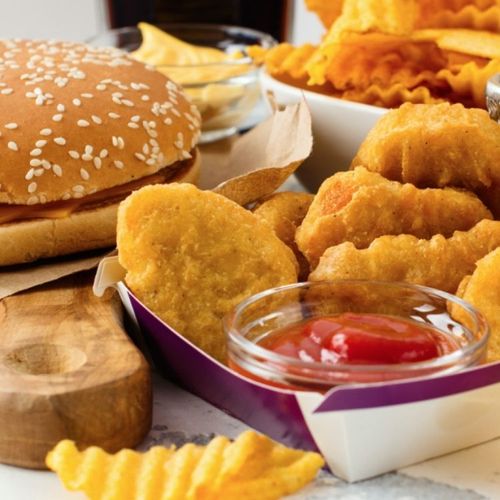The US government recently mandated that trans fatty acids be listed on the nutrition facts label of every food. However, that's not enough to ensure that you're not getting these in your diet.
To learn about trans fatty acids-and how to avoid them-we spoke to Mary Enig, a biochemist and one of the first experts to warn people about the dangers of trans fatty acids.
The Making Of Trans Fatty Acids
Trans fatty acids, also known as trans fats, are solid fats that are produced artificially by a process known as partial hydrogenation.
Background: In the 1980s, many restaurants and food manufacturers switched to using vegetable oils, such as soybean, corn and canola, when the lard, butter and beef fat that were typically used for cooking were found to be high in saturated fat, which increases the risk for obesity and heart disease.
Because these vegetable oils are not stable when heated, manufacturers began using partial hydrogenation to make the oil more solid.
This process extends the shelf life of the oil and of the products made with it. The process also provides the texture, or "mouth-feel," of butter.
The hydrogenation process: A vegetable oil is first refined using chemical solvents and is then mixed with a metal catalyst, such as nickel oxide. The vegetable oil is then subjected to hydrogen gas in a high-pressure, high-temperature reactor. After that, deodorizing agents and bleaches are added.
This hydrogenation process not only creates a cheaper cleaner-smelling, longer-lasting alternative to lard, butter and beef fat, it also changes the molecular configuration of the oil, resulting in a substance that bears no nutritional resemblance to the healthful vegetable oil from which it was derived.
Partially hydrogenated vegetable oil has become the primary fat used in food manufacturing in the US.
Dangers Of Trans Fats
Trans fats make the coronary arteries more rigid and contribute to the formation of blood clots, which can lead to heart attack or stroke. Trans fats also reduce HDL ('good') cholesterol levels and increase LDL ('bad') cholesterol.
According to a study by Dr. Walter Willett, chairman of the department of nutrition at the Harvard School of Public Health, approximately 30,000 premature heart disease deaths each year can be attributed to the consumption of trans fats.
According to Harvard University's landmark Nurses' Health Study, the consumption of just 2 to 3 grams (g) of trans fats daily-the amount typically found in three to six cookies-increases the risk of coronary heart disease by 21%.
Other studies have linked trans fat consumption to diabetes and obesity.
Foods High In Trans Fats
Approximately 40% of the food in supermarkets contains trans fats. This harmful substance is found in 95% of cookies, 80% of frozen breakfast foods, 75% of snacks and chips, 70% of cake mixes and almost 50% of all cereals. And these foods contain plenty of it.
Examples: Products that have the most trans fats include vegetable shortening, dough nuts, stick margarine, French fries (trans fats account for approximately 40% of the total fat content). ..and many cookies and crackers (35%, to 50% of fat content is from trans fats).
Eating establishments are exempt from the new trans fat labeling laws, but fast-food restaurants are among the worst offenders.
Example: A typical apple Danish from a doughnut shop contains approximately 2.7 g of trans fats...two vegetable spring rolls from a Chinese restaurant contain 1.7 g...five chicken nuggets and a large order of French fries from a fast-food restaurant contain nearly 4 g and 7 g, respectively...a piece of baked apple pie can contain 4.5 g.
Read Labels Carefully
In 2002, the American Heart Association's Scientific Conference on Dietary Fats said, "The optimal diet for reducing the risk for chronic disease is one in which trans fatty acids from manufactured fats are virtually eliminated."
Translation: There is no safe level of trans fats. To eliminate them from your diet, you must carefully read labels and the nutritional charts provided by some fast-food restaurants.
Caution: The US Food and Drug Administration (FDA) labeling laws allow a manufacturer to say "0 trans fats" if a product contains 0.5 g or less per serving. (For more information on why this is allowed on food labels and why it can be dangerously unhealthy, as those grams add up quickly, read the following article.)
Safe Foods
All fresh fruits and vegetables, fresh meat, poultry and fish, eggs, milk, cheese and yogurt are free of trans fats. Canned fish also is free of trans fats.
But watch out for processed cheeses, for example, the kind in many "snack packs"-they may contain trans fats.
Important: Trans fats are not formed when you cook-or even fry-at home with vegetable oil. They are created in frying oil only when the oil is reused after cooking a food that contains trans fats-a common practice in fast food restaurants.
